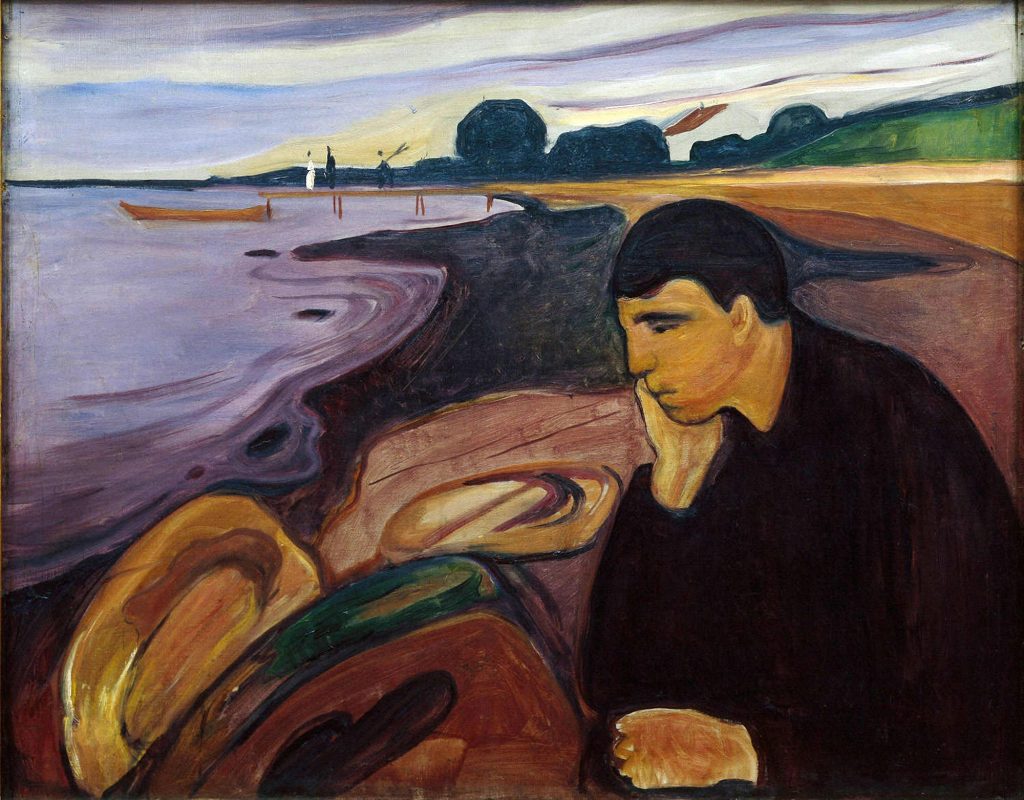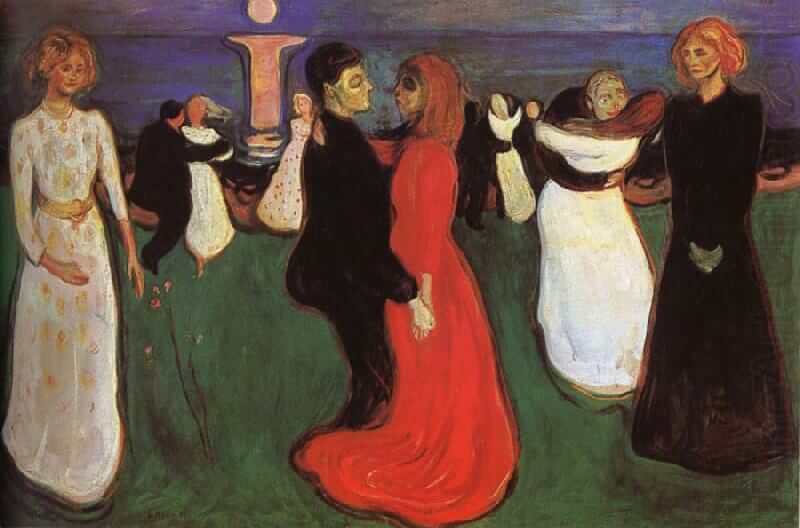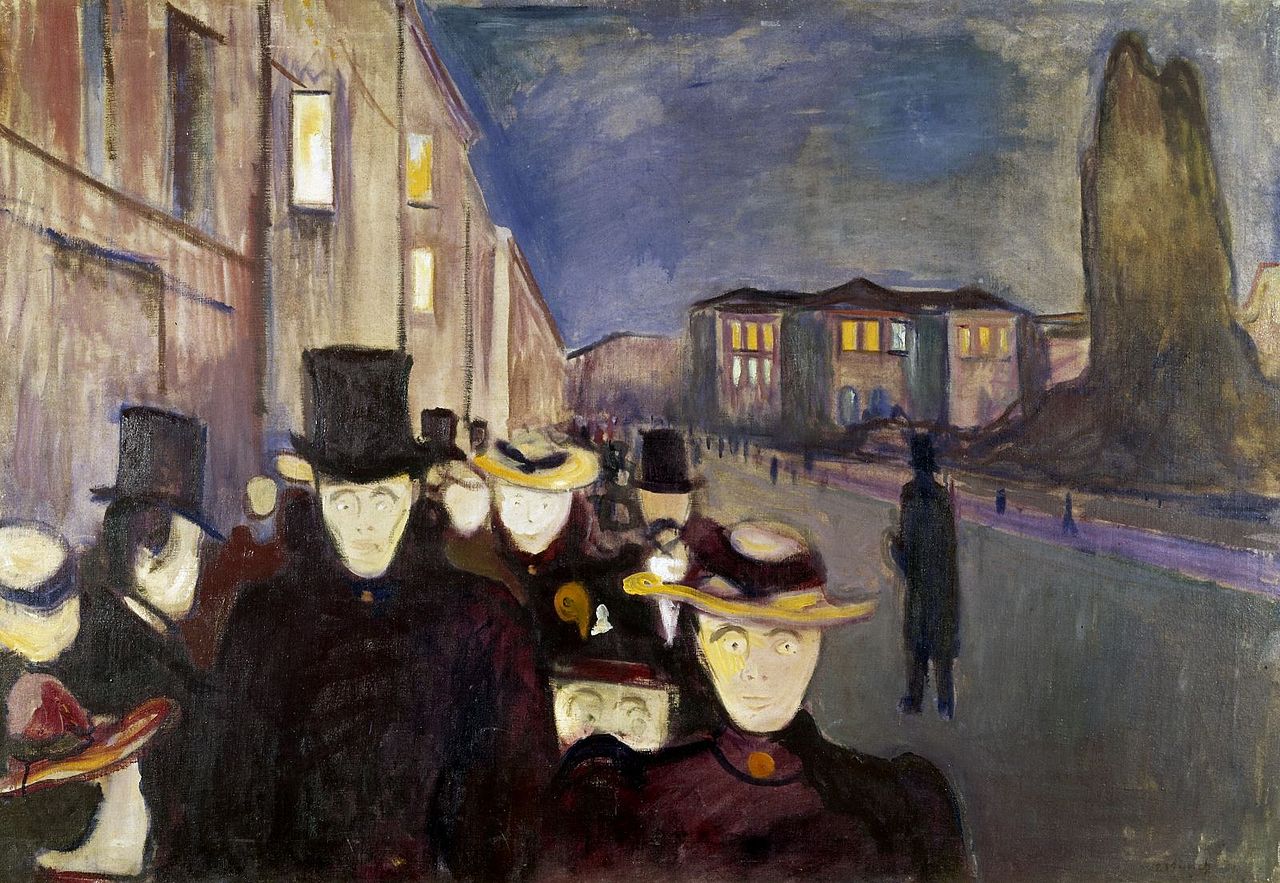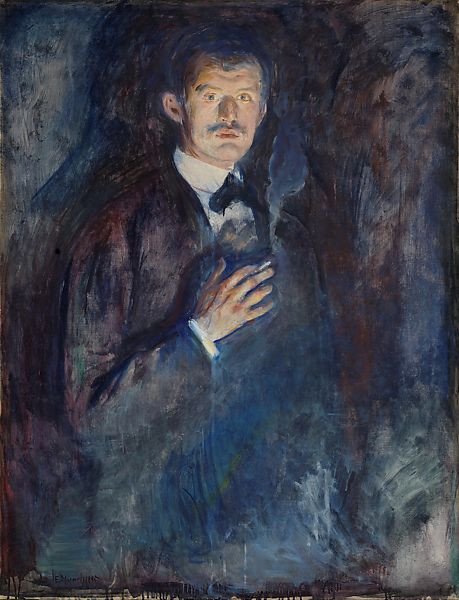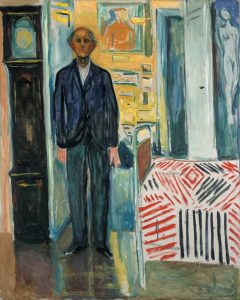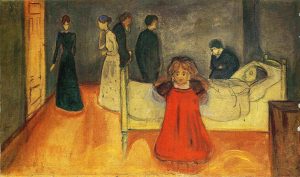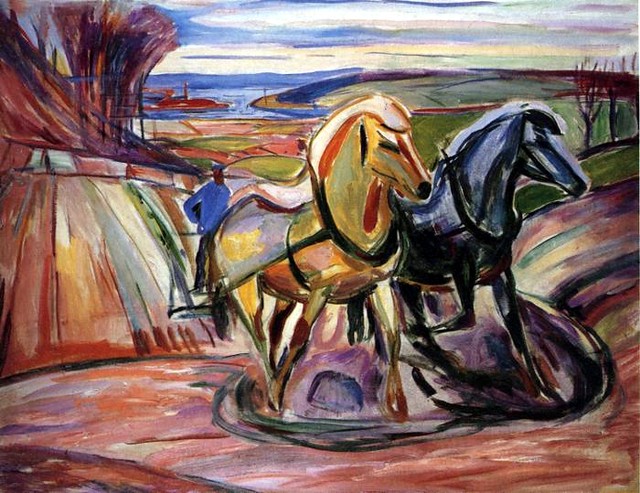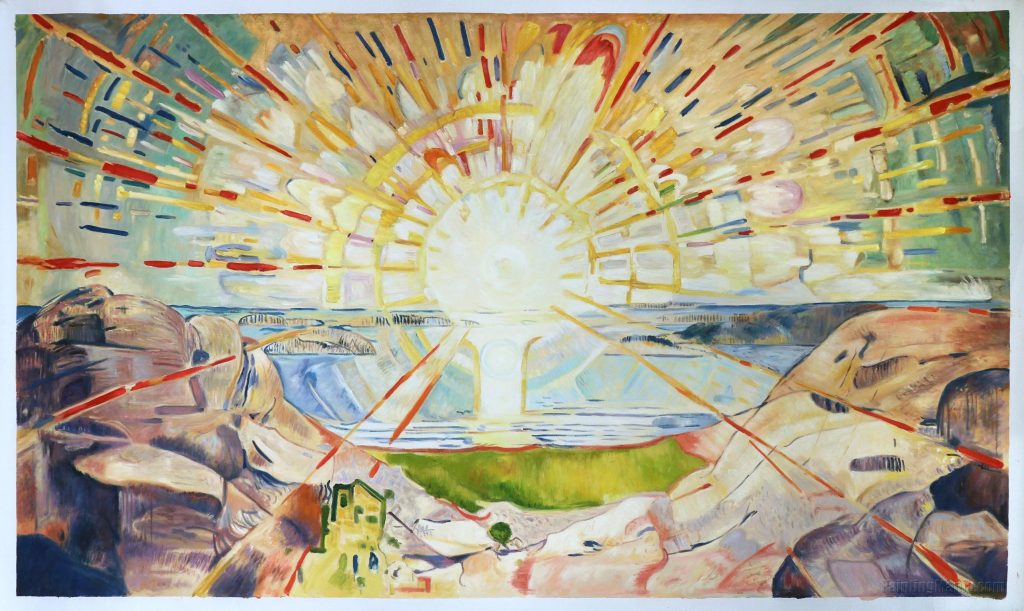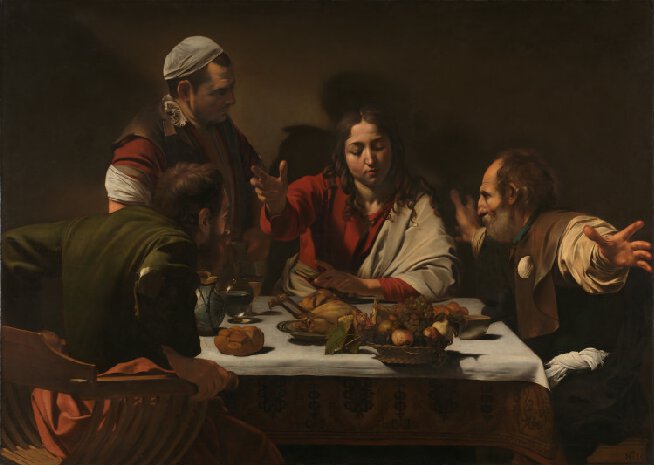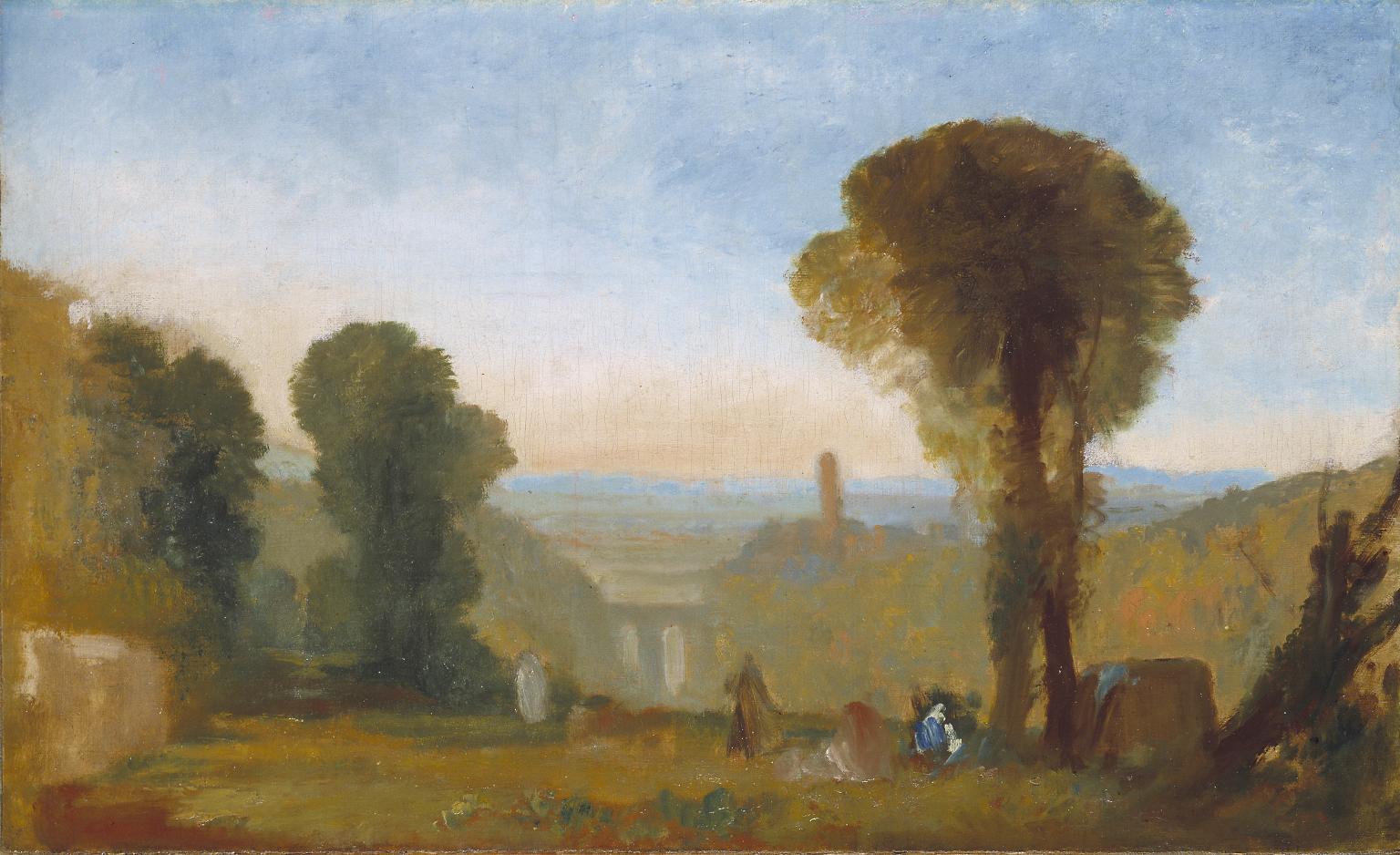16 of Edvard Munch’s Paintings
Edvard Munch, a notable Norwegian painter, was active between the 1880s till 1944. He is well known for his significant painting, The Scream. Munch’s childhood was not an easy one, full of pain and loss of near and dear ones. As a result, human trauma, anxiety, and fear are common themes in his paintings. Hans Jæger, a bohemian, inspired Munch to develop a unique style and bring alive his own emotional and psychological condition in his artworks.
Various impressionist and post-impressionist artists also inspired him, Vincent Van Gogh being a significant example. Whose use of colors and space, Munch perfectly replicates.
Biography of Edvard Munch in a Nutshell
| Full Name | Edvard Munch |
| Birth | 12 December 1863 |
| Nationality | Norwegian |
| Death | 23 January 1944 |
| Inspiration | Impressionists such as Edouard Manet, Claude Monet, and post-impressionism artists Vincent van Gogh, Paul Gauguin, Paul Cezanne. |
| Period | Expressionism, Symbolism, Post-Impressionism, Modern Art |
List of Edvard Munch’s Famous Paintings
1. The Scream
| Completed in: 1893 |
| Style or period: Expressionism |
| Measurements: 91 cm × 73.5 cm (36 in × 28.9 in) |
| Location: Munch Museum and National Gallery, Norway |
| Medium: Oil, tempera, crayon, and pastel on cardboard |
Popularly known as ‘The Scream,’ this modern painting is one of the most remarkable works of Edvard Munch. It is about his own agonized experience of having heard an “infinite scream of nature” while going for a walk with two of his friends. It shows a clothed skull in agony, metaphorically representing the modern man’s anxiety.
This masterpiece draws parallels with Vincent Van Gogh’s The Starry Night due to bright colors, swirling background, and simplistic figures.
Munch created two painted versions of The Scream, both stolen and later recovered. Apart from these, there are two pastel versions and a lithograph.
2. The Sick Child
| Completed in: 1885–86 |
| Style or period: Expressionism |
| Measurements: 121 cm × 118.7 cm (47.6 in × 46.7 in) |
| Location: Nasjonalgalleriet, Oslo |
| Medium: Oil on canvas |
The Sick Child is regarded as Munch’s breakthrough work, exhibiting his inclination to a more personal, emotional, and expressive art form.
It portrayed Johanne Sophie, his sister, when she was on her deathbed suffering from tuberculosis.
The girl is seated on a chair, resting upon a big white pillow. The full-length curtain that she stares at stands for death, as per many art historians.
A grieving woman clad in black sits beside the girl with a bowed head, perhaps being too depressed to look into her eyes. The manner in which they hold hands brings out the emotional bond, compelling art historians to deduce that they could have blood relations, perhaps the lady being the girl’s aunt. In fact, as per critics, the latter seems more upset than Munch’s sister, evident through her expressions and gestures.
Rough vertical brushstrokes and scraped surfaces enhance the emotion of the painting. Munch had later created several other versions of this painting, using various models.
3. Melancholy
| Completed in: 1891 |
| Style or period: Expressionism |
| Measurements: 72 cm × 98 cm (28 in × 39 in) |
| Location: National Gallery, Oslo |
| Medium: Oil on canvas |
Munch found his inspiration for the painting of Melancholy from his friend, Jappe Nilssen, who was having an unfortunate love affair. His friend is seen sitting in dejection near the shorelines with a grim expression and stooped shoulders in the artwork.
His melancholy mood is further depicted through his gestures since his hand rests on his head, indicating that he is in a contemplative mood.
The sky and shoreline extending in the background highlight the mood of the character.
The beautiful landscape represents Asgardstrand’s beach, a place where Munch stayed in the summers from 1889.
4. Madonna
| Completed in: 1894-95 |
| Style or period: Expressionism |
| Measurements: 90 cm × 68 cm (35.4 in × 26.7 in) |
| Location: Munch Museum, Oslo |
| Medium: Oil on canvas |
This painting features a female figure sans the clothes, with long black hair hanging over her shoulder. The woman seems to be immersed in sexual pleasure, with closed eyes and head tilted back. Both her arms are held behind her back, revealing her naked body.
The red band on her head symbolizes a halo. However, as opposed to the usual white halo, Munch uses the color red to depict love and passion.
It is often interpreted as the portrait of the Virgin Mary, though Munch’s connection with Christianity remains unknown.
Apart from Madonna, Munch used many titles for the painting, including ‘The Loving Woman.’ He even produced several versions of this painting in print form.
Unfortunately, a version owned by the Munch Museum, Oslo was stolen, but later recovered. The painting’s lithographic version has an added border that depicts a wriggling sperm and also a fetus-like figure in the bottom end.
5. Night in Saint Cloud
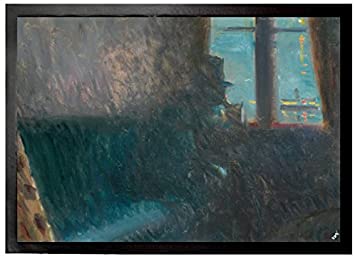
| Completed in: 1890 |
| Style or period: Expressionism |
| Measurements: 70 cm × 56.5 cm (27.56 in × 22.24 in) |
| Location: National Gallery, Oslo |
| Medium: Oil on canvas |
Night in Saint Cloud is a complex painting done in memory of Munch’s father, who had passed away in 1889.
The combination of light and dark shades reveals the elements present in the room, in addition to the dark figure.
The room’s interior is empty, and the gentleman, speculated as Munch’s friend, is seen sitting all by himself, looking out of the window, engaged in deep thoughts.
The artist’s portrayal of empty rooms and solitary figures bears influence of post-impressionist painter, Van Gogh.
6. The Dance of Life
| Completed in: 1899-1900 |
| Style or period: Expressionism |
| Measurements: 125 x 191 cm ( 49.5 in × 75 in) |
| Location: National Gallery, Oslo |
| Medium: Oil paint |
Alternately called Life’s Dance, this one is a notable work in ‘The Frieze of Life,’ Munch’s project containing a series of work done in the 1890s.
From the virgin woman in white to the woman in red with her partner to finally the old widow in black, all the colors symbolically represent the various emotions and phases of a woman’s life.
Perhaps, Munch’s inspiration for this painting was his love, Tulla Larsen, who rejected him and was, in turn, later rejected by him.
It reveals the inner conflicts that he went through because of his turbulent relationship.
7. Death in the Sickroom

| Completed in: 1893 |
| Style or period: Expressionism, Modern Art, Symbolism |
| Measurements: 150 x 167.5 cm ( 59 in × 66 in) |
| Location: The Munch Museum, Oslo |
| Medium: Oil on canvas |
Death in the Sickroom is another of his masterpiece in dedication to his deceased sister, Sophia. As evident from the name, sorrow, death, and lamentation dominate the painting’s primary theme.
The artist has painted himself along with his entire family assembled in a room, sparsely furnished. The figures in dark clothes express sorrow.
Sophia is sitting on the chair, faced backward to the viewers. According to Munch, his bedridden sister’s last wish was to rise from the bed she was confined to for a prolonged period. But, unfortunately, she died sitting on the chair.
Munch follows Van Gogh in his use of colors, keeping green for the walls, black for the picture frame, and orange for the floor, all of which signify the family’s exhaustion and trauma.
In addition to simple, contoured figures, the flattened and widened surface of the room highlights the influence of Paul Gaugin. Of the two versions, one is in the Munch Museum and the other in the National Museum, Oslo.
8. Puberty
| Completed in: 1895 |
| Style or period: Expressionism |
| Measurements: 151.5 cm × 110 cm (59.64 in × 43.3 in) |
| Location: National Museum of Art, Architecture and Design, Oslo |
| Medium: Oil on canvas |
Originally named ‘The Young Model,’ this work portrays the theme of loneliness and adolescence.
At the center of the painting is a naked, young girl sitting on a bed, with the hands placed in front. Her eyes are wide open, and her loose black hair hangs down her shoulders.
There is a fine play of light and shade, the light entering from the left, while a dark and sinister shadow is looming in the background.
The painting perhaps symbolizes the awakening sexuality of the young girl along with fear and anxiety.
9. Moonlight
| Completed in: 1895 |
| Style or period: Symbolism |
| Measurements: 140.5 cm × 137cm (55.3 in × 53.9 in) |
| Location: The National Museum of Art, Architecture and Design, Oslo |
| Medium: Oil on canvas |
Moonlight is one of Munch’s simplified portrayals of the beautiful Norwegian landscape on a summer night.
With its shadow on the waters, the moonlight in the center intensifies the beauty of the tranquil atmosphere with no human intervention.
The artist balances the curves of the coastlines with the straight trees. Though there is a use of subdued colors, one can clearly distinguish the different elements in the painting.
Unlike other paintings, Moonlight brings out the mood of nature rather than depicting the emotions of human beings.
Nevertheless, one can observe the similarity of themes to Munch’s earlier painting, The Voice, the only difference being the latter had a feminine figure in the foreground.
10. Evening on Karl Johan Street
| Completed in: 1892 |
| Style or period: Expressionism |
| Measurements: 84.5 cm × 121cm (33.2 in × 47.6 in) |
| Location: Rasmus Meyer Collection, Norway |
| Medium: Oil on canvas |
Here, Munch painted figures dressed in black, with pale faces and wide eyes showing no emotions, streaming towards the viewer.
Capturing a scene from the main street (Karl Johan) of Kristiana, the crowd’s similar clothing and emotionless face may symbolize the bourgeoisie’s condition of the time.
The pale faces with wide eyes and dead expressions remind one of a zombie. Loneliness and anxiety are the main themes of this painting.
In contrast to the crowd, a black figure seems to walk away in the middle of the street. Perhaps the artist himself avoids being a part of the bourgeoisie majority as he lived a bohemian life.
He uses red for the houses, black for the figures, and blue for the clear sky above. This blend of light and dark reminds us of Van Gogh’s tonal painting technique.
11. Self-Portrait with Burning Cigarette
| Completed in: 1895 |
| Style or period: Expressionism |
| Measurements: 110.5 cm × 85.5 cm (43.5 in × 33.6 in) |
| Location: The National Museum of Art, Architecture and Design, Oslo |
| Medium: Oil on canvas |
There is a fine balance of light and shade used in the Self-Portrait with Burning Cigarette. It shows the artist present in a dark background, the location hence not identifiable.
The light focuses on his face and his right hand, holding the cigarette. The shaded left and right areas evoke a mysterious surrounding.
The foreground is in a lighter shade, making the smoke of the burning cigarette drifting away clearly visible.
12. Self-Portrait: Between Clock and Bed
| Completed in: 1940-1943 |
| Style or period: Expressionism |
| Measurements: 149.5 cm (58.8 in.) x 120.5 cm (47.4 in.) |
| Location: The Munch Museum, Oslo |
| Medium: Oil on canvas |
One of Munch’s last notable works, Self-Portrait: Between Clock and Bed, portrays the artist as a lonely, old man standing emotionless between a bed and a clock.
Behind him lies the brightly colored room displaying the artworks he created in the past. He, however, chooses to stand between the clock and bed.
The clock symbolizes the inevitable ticking away of time, and the bed stands for the place where he would be laid to rest finally. It brings to focus the stark reality of death being an unavoidable part of life.
13. The Dead Mother
| Completed in: 1900 |
| Style or period: Expressionism |
| Measurements: 99 cm (38.9 in.) x 90 cm (35.4 in.) |
| Location: Kunsthalle Bremen,Germany |
| Medium: Oil on canvas |
Munch named the first version of the painting “The Dead Mother and Child” (1897-1899). He renamed the later version, completed in 1900, as “The Dead Mother.”
It depicts a terrified child covering her ears in utter disbelief and confusion, standing near her dead mother, with her back facing the bed.
The agonizing gesture of the minor reminds one of his remarkable works, ‘The Scream.’ Through the little girl, it seems Munch makes his own turmoil quite evident, an outcome of his troubled family life.
14. Ashes
| Completed in: 1894-95 |
| Style or period: Expressionism |
| Measurements: 120.5 cm (47.4 in.) x 141 cm (56 in.) |
| Location: National Gallery of Norway, Oslo |
| Medium: Oil on canvas |
It depicts a couple in the forest, the atmosphere filled with despair and hopelessness. In the left corner, the man rests his head on his hand, trying to hide his face in shame or sadness.
With her hands on her head, the woman, positioned in the center, seems frustrated and unhappy. It reflects the flaming desire of the couple turning into ashes.
This scene appears similar to Munch’s personal affair with Millie Thaulow, his cousin’s wife. They, too, would meet stealthily in the woods.
The later version of the painting produced in 1925 hangs in the Munch Museum of Oslo.
15. Spring Ploughing
| Completed in: 1918 |
| Style or period: Expressionism |
| Measurements: 85 cm (33.46 in.) x 111 cm (43.7 in.) |
| Location: The Munch Museum, Oslo |
| Medium: Oil on canvas |
It depicts a remarkable change in Munch’s artwork from the theme of sorrow, loss, and anxiety to his newly developed interest in the Norwegian landscape, including farms and animals.
He took inspiration for this work from a young expressionist painter Franz Marc. One can notice the brushwork and brilliant use of the color pattern of an expert’s hand.
16. The Sun
| Completed in: 1909 |
| Style or period: Expressionism |
| Measurements: 455 cm x 780 cm (179.1 in x 307 in) |
| Location: Oslo University Assembly Hall |
| Medium: Oil on canvas |
The sun is the center point of focus, as evident from the name. It spreads out its large rays in all directions illuminating the surrounding landscape to the fullest.
The rays touch every part of the earth, like the ocean’s bare rocks or the greenery separating the sea from the land. The varying colors of the rays changing to yellow, red, green, and blue eventually has been magnificently displayed by Munch.
For a realistic touch, a horizontal line intersects the sky and water. Munch also depicts the sun’s circular movement giving an impression of the picture moving back and forth.
The theme of melancholy has taken a back seat here, with this painting being bold and powerful.
Conclusion
Other of Munch’s notable works include Starry Night (1893), Anxiety (1894), Vampire or Love and Pain (1895), The Voice (1896), and Red and White (1899 -1900). The wonderful interplay of light and dark, alongside a plethora of colors, takes Munch’s painting to another level.
Subscribe now
Get lasest updates in your inbox




